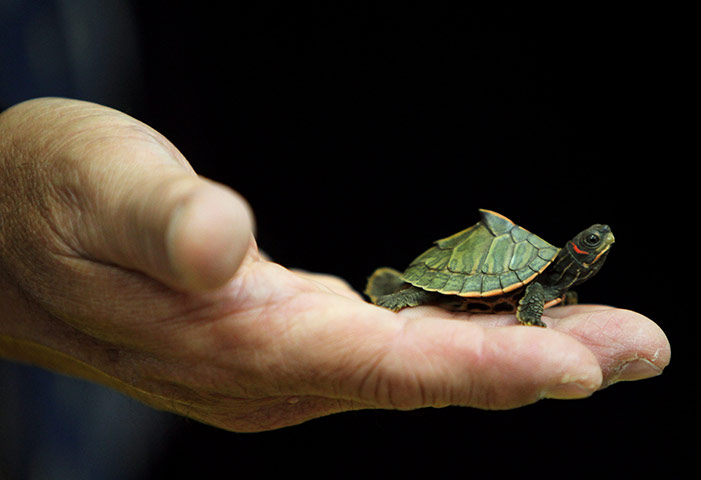TOP STORIES
Bison study to use sterilization to thwart disease
Up to 100 Yellowstone National Park bison would be temporarily sterilized under a government research proposal aimed at combating a disease carried by the animals, federal officials said Thursday. The research could begin as soon as next spring and would be done in partnership with the park, said Lyndsay Cole with the federal Animal and Plant Health Inspection Service. Fifty-three Yellowstone bison captured this winter are being held for the project at a government compound north of Yellowstone in Corwin Springs.
Wildlife advocates criticized the proposal as a population control experiment that could harm Yellowstone's prized herds of genetically pure bison.
Roughly half of Yellowstone's bison have been exposed to brucellosis, a disease that causes animals to prematurely abort their young. To keep the disease from spreading to cattle, almost 4,000 Yellowstone bison have been killed over the past decade during their annual migration into Montana. Researchers have been trying for years to come up with a way to reduce the prevalence of the disease in hopes of stemming the periodic government-sponsored mass slaughters of the animals. The chemical contraceptive, GonaCon, that would be injected in the bison at Corwin Spring previously has been used to control deer populations, Cole said.
"It's not permanent contraception. This would be a nonlethal way of breaking the disease cycle," she said. Cole said there were no pending plans to use the contraceptive on the broader bison population.
 Pygmy marine whale dies after beaching in Destin
Pygmy marine whale dies after beaching in DestinA pygmy killer whale that was stranded on the shore of the Gulf of Mexico on Tuesday night had to be euthanized the next day. The whale, which is rarely found so close to shore, washed up on the beach behind the Destiny by the Sea subdivision. Bystanders discovered the 8½–foot, 500-pound whale at about 10:30 p.m.
The pygmy killer whale is an offshore, deepwater species usually found past the Continental Shelf, said Amanda Wilkerson, director of the Emerald Coast Wildlife Refuge. She has seen only one other in the 10 years she has worked with the refuge.
“When one strands it’s usually because it’s not in very good shape,” Wilkerson said.
02 June 2011
Location: Destin, Florida, USA - Map It

>>>FULL ARTICLE
"Mange" in Wild Sheep of Similkameen Valley, BC
A new health issue of wild sheep has been recognized in the Similkameen Valley (Southern British Columbia). This condition is known as Psoroptic Mange, Psoroptic scabies or Psoroptes infestation. Little is known about the disease in BC, since it was only recently recognized. Researchers hope to learn more in the next few months and years.
"Mange" is a general term for skin disease caused by mites called Psoroptes. These mites live in the ears and on the bodies of many animals. The mites can cause a severe disease where the host animals develop heavy crusts in and around their ears and other locations over their bodies, lose hair and body condition, and may die. Because of the intense pain and irritation caused by this disease, it is considered an animal welfare issue.
Despite occurring worldwide, Psoroptes mites are considered uncommon in domsetic sheep and cattle as they are easily controlled with injectable wormers. Because it is so easily controlled, Psoroptic mange was eradicated from Canadian domestic sheep in 1924. While it is still present, to varying degrees, in some US bighorn populations, it has never before been reported in Canada.
02 June 2011
[Courtesy of Australian Wildlife Health Network]
>>>FULL ARTICLE
OTHER WILDLIFE HEALTH-RELATED NEWS
Photo credit: This Week in Wildlife
 Mysterious disease sounds the death knell for bats
Mysterious disease sounds the death knell for bats- Avian Influenza found in tufted duck and goshawk [Matsue-shi, Shimane, Japan - Map It
 ; Shioya-gun, Tochigi, Japan - Map It
; Shioya-gun, Tochigi, Japan - Map It ] [Courtesy of Australian Wildlife Health Network]
] [Courtesy of Australian Wildlife Health Network] - Philadelphia beaver confirmed to have rabies [Pennsylvania, USA]
- US Agency says Coral Reef Destruction is Slowing This Year




